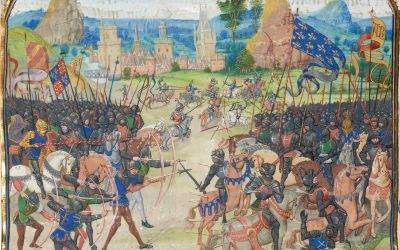It’s no secret that women have always played a major role in history. But they often don’t get their dues when it comes to recognizing their achievements.
So it is all the more incredible to note these famous French women whose names are instantly recognizable, years, decades, and even centuries after their deaths.
These fascinating female figures lived in France (even if a number of them were born elsewhere), and have been instrumental in everything from politics and art to literature and science. So let’s get to the top French women who changed history, shall we? Allons-y!
- 1. Joan of Arc (1412 – 1431)
- 2. Marie Curie (1867 – 1934)
- 3. Josephine Baker (1906 – 1975)
- 4. Eleanor of Aquitaine (1122 – 1204)
- 5. Catherine de Medici (1519 – 1589)
- 6. Marie-Antoinette (1755 – 1793)
- 7. Charlotte Corday (1768 – 1793)
- 8. Simone de Beauvoir (1908 – 1986)
- 9. Anne de Bretagne (1477 – 1514)
- 10. Simone Veil (1927 – 2017)
- 11. Saint Genevieve, Patroness of Paris (419 – 512)
- 12. Berty Albrecht (1893 – 1943)
- 13. Hélène Studler (1891 – 1944)
- 14. Coco Chanel (1883 – 1971)
- 15. Marianne (1789 – Current)
1. Joan of Arc (1412 – 1431)
In the midst of the 100 years’ war between England and France, a young maid named Jeanne d’Arc (Joan of Arc) would capture the imagination of France.
Born to a relatively poor family, the young girl said that she received visions of the archangel Michael instructing her to support the French King Charles VII from the English.
Nicknamed la Pucelle d’Orléans (the maid from Orléans), she arrived in the French court at 17 years-old, dressed as a male soldier and made a strong impression on the King, whose armies were rapidly weakening.
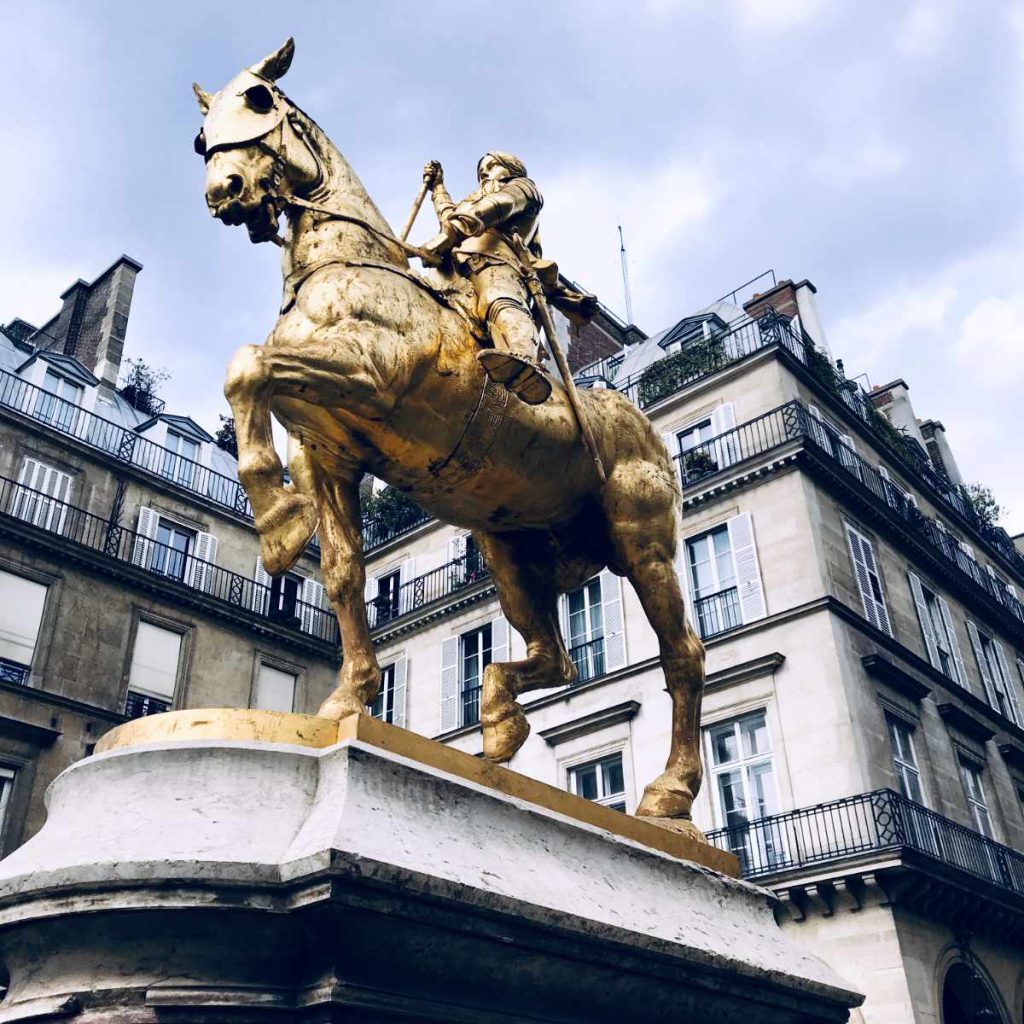
The French King sent Joan on a series of battles, along with the Scots with whom the French had formed the Auld Alliance. A deeply religious woman, Joan was able to lead the French army to victory, with her appearance effectively turned the war over territory into a religious war.
On 23 May 1430, she was captured in Compiègne in the North of France by a group of French nobles from Burgundy, who were allied with the English. She put on trial by the pro-English bishop Pierre Cauchon on a variety of charges, including cross-dressing and heresy.
After being declared guilty, she was burned at the stake on 30 May 1431 in Rouen, dying at about 19 years-old.
She was declared a martyr, and in the 18th century made a symbol of France by Napoleon Bonaparte. In the 20th century, she was canonized by the Roman Catholic Church and made one of the patron saints of France. (Her legacy however, has been usurped by the ultra-right movement today in France.)
2. Marie Curie (1867 – 1934)
Marie Sklodowska moved to Paris as a young woman, which is where she met her husband, a French physicist named Pierre Curie. Together, they would identify radioactive isotopes develop the theory of “radioactivity” and share the 1903 Nobel Prize in Physics.
Marie Curie would go on to also win the 1911 Nobel Prize in Chemistry, after the death of her husband, making her the first person to win in two different fields.
In 1920 she founded the Curie Institute in Paris, (as well as one in Warsaw, Poland) which remain major centres of medical research.
Today, Marie and Pierre Curie are buried in the Panthéon in Paris, in tombs lined with lead as their bodies are still radioactive.
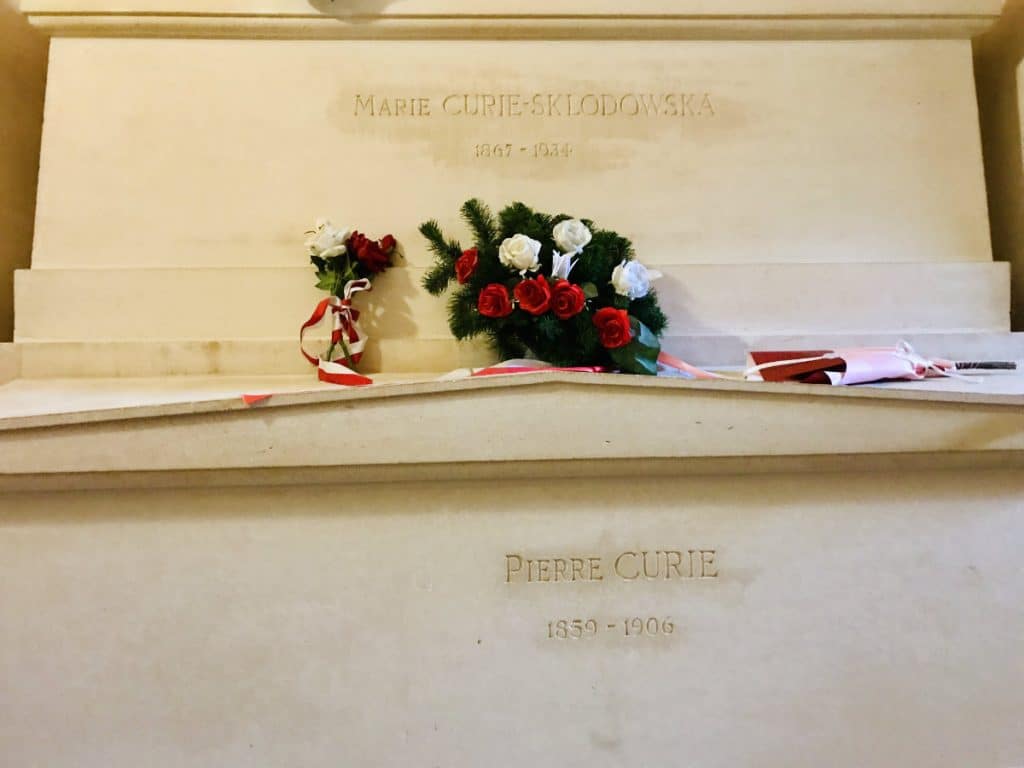
Their daughter, Irène Joliot-Curie, also won the Nobel prize for chemistry in 1935 together with her husband Frédéric Joliot-Curie.
3. Josephine Baker (1906 – 1975)
American-born Josephine Baker is first black woman to enter the Panthéon in Paris. She is only the 6th woman among 80+ men to have that honor. A naturalized French citizen, Baker has long been an icon in France.
In addition to being a legendary performer, she was also part of the French resistance during WWII, acting as a spy and travelling around delivering secrets.

After the war, she advocated humanism and civil rights in both the U.S. and France, adopting her “rainbow family” of children from across the world.
Baker was previously awarded the Croix de guerre, the Rosette de la Résistance, and made a Chevalier of the Légion d’honneur by President Charles de Gaulle.
4. Eleanor of Aquitaine (1122 – 1204)
In the Middle Ages, a young 14-year-old girl named Alienor inherited everything upon the death of her father, becoming one of the wealthiest brides in Europe. Outliving her brother, Alienor would become the duchess of the vast territory of Aquitaine (which is the region around Bordeaux).
Beautiful and wealthy, she was quickly married off to the future King of France Louis VII of the House of Capet. As Queen, she gave him 2 daughters but no sons, which causes Louis VII to annul the marriage.
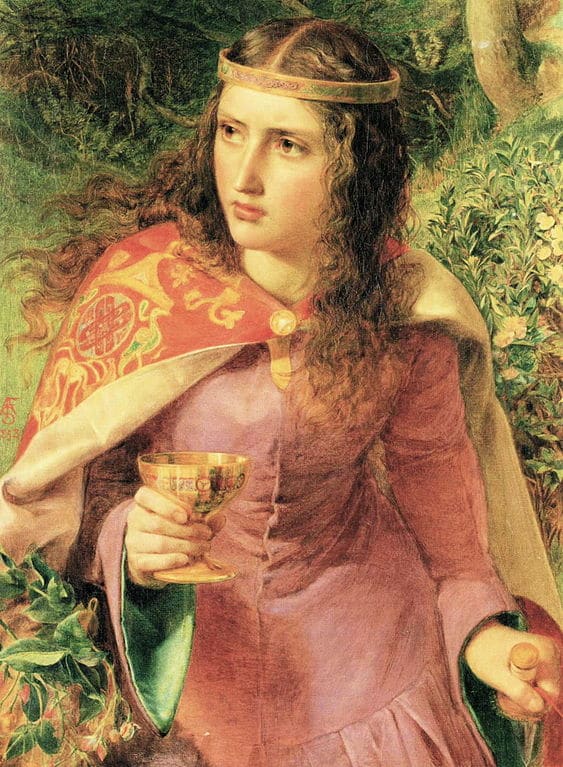
Clever Alienor then took her fate into her own hands. She proposed to marry the grandson of William the Conqueror, Henri II of England (and current Duke of Normandy).
As her duchy of Aquitaine remained in her name, by combining Normandy and Aquitaine, almost 1/2 of France went under the rule of the English King.
And thus Alienor became one of two Queens on this list to have been married to 2 different Kings (the other is Anne of Brittany below).
And in case you were wondering, the now anglicised Eleanor of Aquitaine gave her new husband 4 sons, including King Richard the Lionheart of England and (evil) King John of Robinhood of Magna Carter fame.
5. Catherine de Medici (1519 – 1589)
The younger son of King François I married an Italian noblewoman from the powerful Medici family, bringing with her plenty of wealth. She was never meant to be Queen of France.
As the wife of Henri II, Catherine de Medici soon gives him 3 sons who will each become King of France. She is quite bossy and unpleasant however, and Henri II is soon more occupied with his favorite Diane de Poitiers, who constructs the famous Château de Chenonceau on the water, in the Loire Valley.
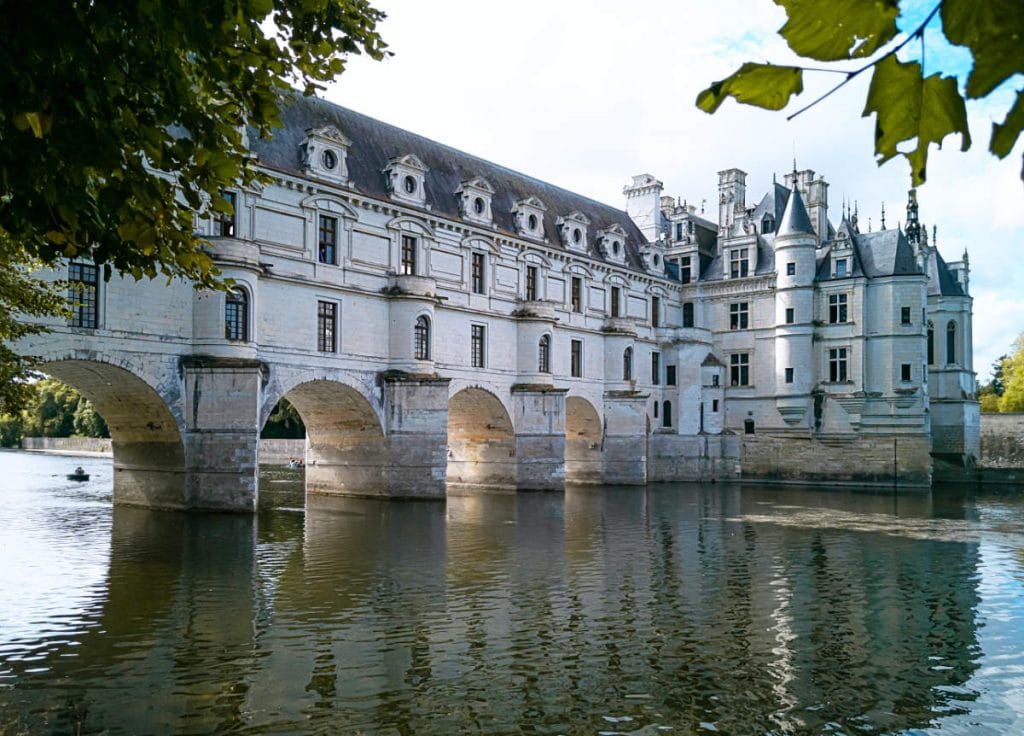
After her husband died, Catherine quickly seizes the Château and banishes Diane. Catherine also married her oldest son to Catholic Mary Queen of Scots in an alliance against the English. By certain historians’ accounts, Catherine was now the most powerful woman in 16th-century Europe.
Luck would not be on her side, however. With Catherine in charge, France was in full out civil and religious war, as Catholics in Paris and Protestant Huguenots in the south of France fought each other.
Over 3 million French people are believed to have died, making it one of the deadliest religious wars in Europe. In addition, each of her sons died before leaving any heirs.
With her sons dead, and one daughter already married to the King of Spain, Catherine de Medici married her last remaining daughter Marguerite of Valois to the next King, Henri IV (Henri of Navarre).
Henri IV is protestant, and marrying Catholic Marguerite was meant to put an end to the wars of religion between the Catholics and Protestant Huguenots. Instead, there was a rather brutal massacre outside the Louvre Palace a couple of days after their wedding,
With the bride and groom staying at the Palais du Louvre, both Protestants Huguenots and Catholics had descended on Paris to be present at the marriage.

Alarmed that Protestant Henri was now in line to the throne of France, they would turn on Huguenots gathered, encouraged by Catholic Catherine. Estimates, the number of dead across France vary from 10,000 to 30,000 people at the end of the St. Bartholomew’s day massacre.
It would take her son-in-law King Henri IV turning to Catholicism, with the famous quote “Paris is worth a mass” to restore some semblance of peace across France.
6. Marie-Antoinette (1755 – 1793)
When Austrian Princess Marie-Antoinette married the future French King Louis XVI, France was slowly going bankrupt. She entered the Château of Versailles at its height of elegance as a mere teenager.
However, the 16-year-old Marie-Antoinette was desperately homesick. Adding to her misery, her husband took 7 years to consummate the marriage and give her a child.
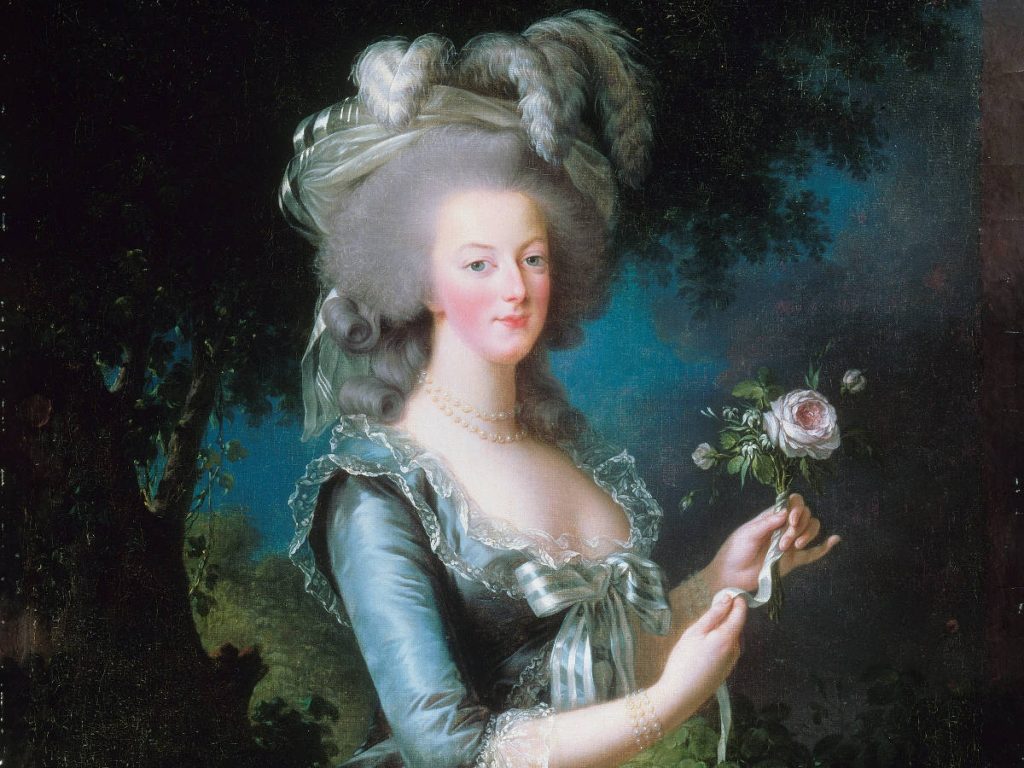
While she amused herself throwing parties and entertainment as best she could, King Louis XVI was spending a lot of money helping the American Revolutionaries fight their mutual arch-enemy, the English.
It would not end well, as the people blamed him and his “foreign spendthrift” wife for the ills of the country. To pay for it all, he tried to impose even more taxes on the poor to raise money.
The French King and Queen Marie-Antoinette were taken from Versailles when the monarchy was overthrown during the French revolution and eventually beheaded at Place de la Concorde in Paris in 1793.
Their 10-year-old son (Louis XVII) disappeared and no trace remains of what happened to him. Their elder daughter fared a bit better and survived the Revolution to the ripe old age of 70.
But she was so traumatized, she never had children. You can read more about Marie-Antoinette and her family here.
7. Charlotte Corday (1768 – 1793)
Charlotte Corday was a young author and activist during the French Revolution. But it is for a murder that her name is long remembered in the French history books.
Jean-Paul Marat was a journalist and radical politician during the revolution. Known for advocating some of the worst massacres during the Reign of Terror through his newspaper, he was already an icon because of his debilitating skin condition that required him to spend much of his day in a medicinal bath.
Charlotte Corday was a member of an opposing revolutionary group, the Girondins, who represented a more moderate approach to the revolution. She became skeptical about the direction the revolution was taking, and the reign of terror that was being unleashed across France .
She would purchase a knife in the hotbed of opposition that was then the Palais Egalité, and sneak into Marat’s bathroom while he was in the bath to stab him.
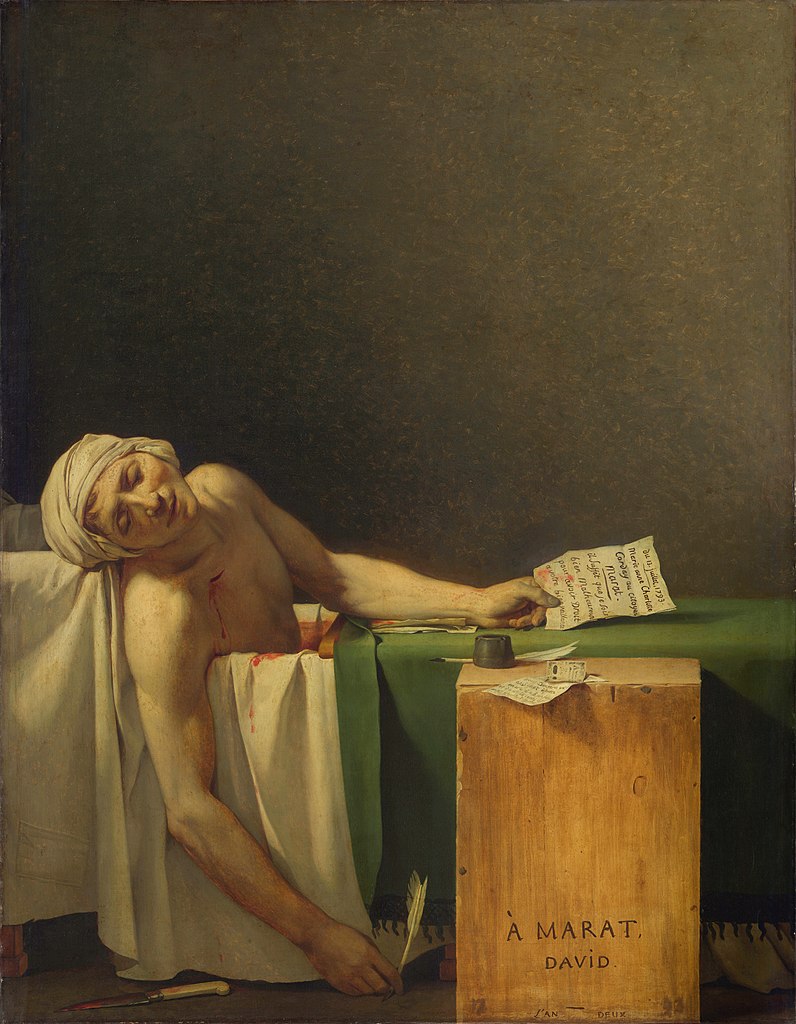
They both became martyrs of the revolution, and Corday herself was executed less than four days, on 17 July 1793.
At only 24 years-old, her act transformed the idea of what a woman was capable of, at a time when women were not widely represented amongst the revolutionaries.
8. Simone de Beauvoir (1908 – 1986)
French author and feminist Simone de Beauvoir became famous for her writings on both feminist theory and feminist existentialism.
One is not born, but rather becomes, a woman.
Simone de Beauvoir
France would grant women the right to vote during her lifetime in 1946, due to the advocacy work of writers and philosophers like her.
Among her most famous books was the 1949 treatise The Second Sex, a detailed analysis of women’s oppression and contemporary feminism, as well as The Coming of Age. She would win France’s top prize for writers, the Prix Goncourt in 1954.
Living with her partner Jean-Paul Sartre, a famous writer of his own account, the two would advocate extensively for women, the working class, and neglected minority groups. (Her sister Hélène de Beauvoir was also a famous painter focusing on female issues.)
They lived together for much of her life, having met as students during WWII. It is believed that they had an open relationship, and Beauvoir was known to be bisexual. They are buried together in the Cemetery of Montparnasse in Paris.
9. Anne de Bretagne (1477 – 1514)
The year was 1491 and the 100 years’ war had barely ended, when there was a highly eligible 14-year-old bride entered the royal marriage mart. Brittany had a new Duchess, Anne de Bretagne (the French word for “Brittany”).
She and her lands were so coveted, that she was promptly betrothed to:
- Edward, Prince of Wales and heir to the English throne
- Maximilian, King of the Romans and Archduke of Austria
- Alain I of Albret, a French count and great-grandson of Duke John V of Brittany
- Louis, Duke of Orléans, cousin of French King Charles VIII.
- John IV of Chalon-Arlay, Prince of Orange (Netherlands)
- Edward Stafford, 3rd Duke of Buckingham (England)
The poor girl, fortunately, didn’t have to marry all those men, because the King of France Charles VIII (and his army) insisted that she marry him instead.

In order to save the city of Rennes which was under siege, she acquiesced. And thus the duchy of Brittany became part of France.
Her husband King Charles VIII would not last long however. None of their children survived early childhood, and when the king died in 1498, the throne went to his cousin, King Louis XII.
Following an agreement made to secure the annexation of Brittany by France, Anne had to marry the new king, making her twice the Queen of France.
Throughout her reign she fought for the rights of Bretons, as its citizens were called. To this day Brittany considers itself a separate entity, paying her tribute.
10. Simone Veil (1927 – 2017)
One of the handful of women buried at the French Panthéon is Simone Veil. A member of the French resistance, she survived the Holocaust having been imprisoned both at Auschwitz and Bergen-Belsen as a teenager.
She would go on to become Health minister of France in the 1970s, becoming a fierce advocate for women’s rights, and in particular the right of abortion.
She would also become President of the European Parliament from 1979 to 1982, the first woman to hold that office.
She is buried at the Panthéon in Paris, along side her husband Antoine, who was moved from Père Lachaise cemetery in the 20th arrondissement so that he could lie next to her.
11. Saint Genevieve, Patroness of Paris (419 – 512)
During the 5th century, the Roman empire was gradually decreasing in influence due to the increasing Frankish invasions (a Germanic tribe). At the time, lived an ordinary woman from Nanterre, called Genevieve who saw God and became a nun at 15. She would slowly become renowned for her piety and her visions.
In 451 AD, the city was threatened by the army of Attila the Hun, which had pillaged Treves, Metz and Reims. Parisians were planning to abandon the city, but they were persuaded to resist by Geneviève who led a prayer-marathon to divert the Hun army.
When the Huns diverted to Orléans instead, Geneviève was proclaimed a heroine. During subsequent attacks and sieges, it was Geneviève who would negotiate between the armies, looking out for the people of Paris.
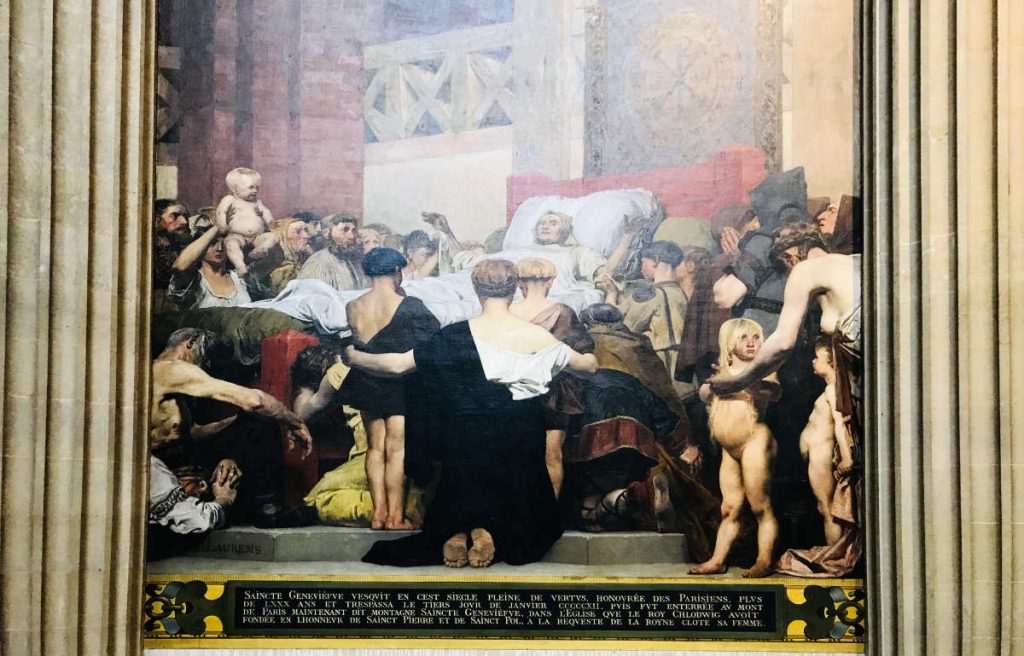
She would go on to counsel Clovis I, the first King of France to convert to Christianity and make Paris his base. Cannonized after her death, Saint Genevieve is even today considered the protectrice of Paris.
The Panthéon in Paris was originally intended to be a temple dedicated to her. While the Pantheon ended up being converted into a tribute for the great thinkers and visionaries of France, there is a church dedicated to her in Paris.
Located on the Montagne Sainte-Geneviève next to the Panthéon, is the Saint-Étienne-du-Mont church which replaced an earlier church in the 5th century. It is here that Sainte Geneviève was reburied.
According to tradition, Saint Geneviève used to come there to pray and taking a path that became rue de la Montagne-Sainte-Geneviève. There are statues of her in several locations around Paris, including one in the city’s town hall.
12. Berty Albrecht (1893 – 1943)
Born in Marseille of Swiss parents, Berty Albrecht grew up to become a teacher at the Sorbonne and the president of the Human Rights League.
A certified nurse, she campaigned for the women’s right to access contraception and abortion. But it was her work for the French Resistance during WWII that she is most recognized.
Having began aiding German refugees in the 1930s, she joined the Resistance in 1940 and contributed to the creation of the largest underground movement in the South zone, Combat, with her friend Henry Frenay.
She was arrested by the Vichy government on behalf of the German Reich and put on trial in Lyon. She managed to escape from prison but refused to flee France to England and tried to continue her work. She was arrested in 1943 by the Gestapo and tortured before committing suicide in her cell.
She is one of the six women Companions of the Liberation and one of the two women buried in the crypt of the France combatant memorial at Mont Valérien in Suresnes (just outside Paris).
13. Hélène Studler (1891 – 1944)
Often called the “French Schindler”, Hélène Studler was a nun of the congregation of the Daughters of Charity of Saint Vincent de Paúl de Metz and member of the French resistance.
She was recognized for having organized the flight of more than 2000 soldiers from under the German Reich during WWII to the Free Zone, including future French president François Mitterand.
She was arrested in 1941, and spent some time in prison before resuming her escape route network for refugees. She died in November 1944, during the fighting that liberated Metz. She was posthumously awarded the National Order of the Legion of Honor and the Croix de guerre with palms.
14. Coco Chanel (1883 – 1971)
The journey of the Chanel couture fashion house began in 1910 when Gabrielle “Coco” Chanel opened her first boutique in Paris. Originally selling hats as a milliner, Chanel would soon get women to break free from the corseted silhouettes of the time.
After World War I, people wanted to let loose. The roaring 1920s would see corsets being banished and complicated dresses pushed to the back of the closet.
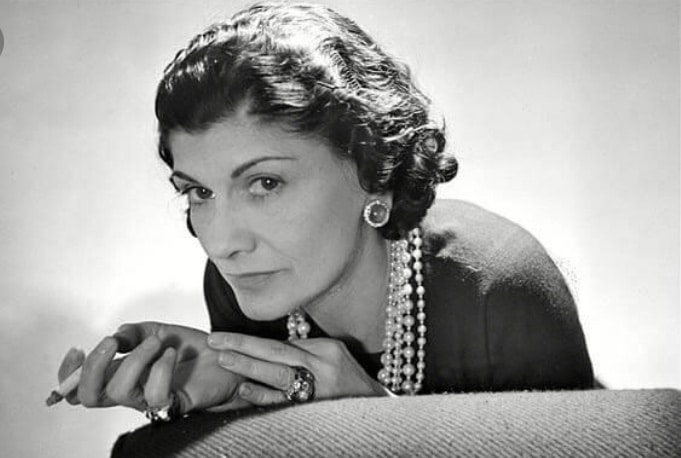
In 1926 Coco Chanel published a picture of a short, simple black dress in American Vogue. It was calf-length and straight, and a revolution in terms of women’s clothing.
The simple design made it accessible for women of all social classes, while still being chic and attractive. The legend of the little black dress (and Coco Chanel) was born.
During the German occupation of France during World War II, Chanel was suspected of too close to the German occupiers while living at the Ritz Hotel in Paris. After the war, she was not charged as a collaborator due to an intervention by British President Winston Churchill.
She died at 87 while still living at the Ritz hotel. She had been in the process of preparing her spring catalogue.
15. Marianne (1789 – Current)
Marianne may not be a real woman, but she is one of the most important female figures in France today.
The female figure is usually dressed in white, with a red Phrygian cap (a soft conical cap with the apex bent over). She became a symbol after the French Revolution, perhaps meant to replace the royal figurehead of the Queen.
The symbol was meant to replace the physical symbol of the fleur de lys, which represented the monarchy. (Although obviously it was quite difficult to get the fleur de lys off of all the royal châteaux and monuments all over France).

One of the most emblematic paintings in France is Liberty Leading the People, by famed French artist Eugène Delacroix. On display at the Louvre Museum, it shows a partially clothed Marianne, the symbol of France, leading the people towards a revolution.
The revolution in question however, is not the 1789 French Revolution, but the the July Revolution of 1830. (Yes, French people like to protest a lot.)
Among the famous celebrities who have modelled for the official symbol of Marianne are French actresses Brigitte Bardot, Catherine Deneuve, Laetitia Casta and Sophie Marceau.

If you enjoyed that article, you may like to read more about other famous people in France. A bientôt!

